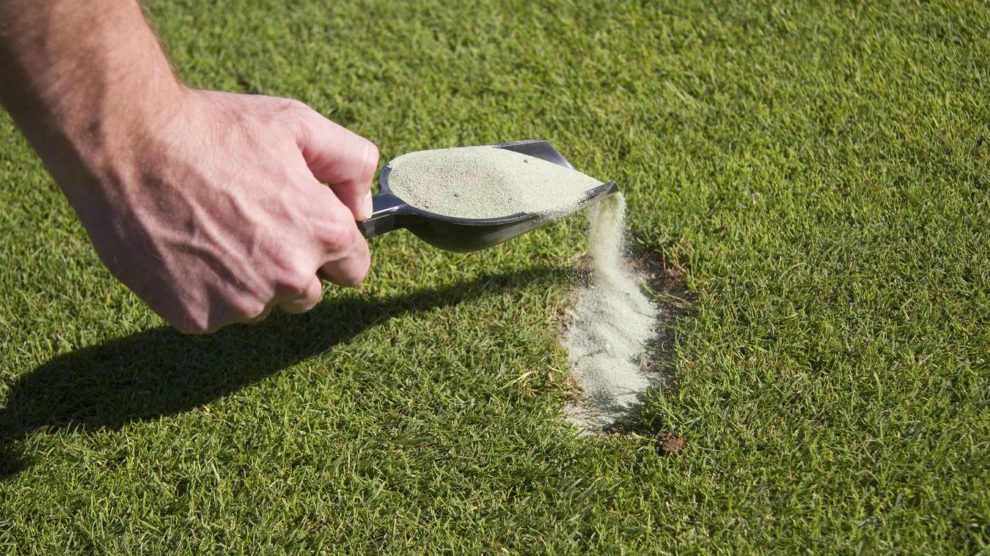While you've been standing on the tee of a golf course, particularly on a par 3, you've no doubt seen a bucket or a container with a mixture in it and a small shovel or scooper.
These buckets and containers hold something very important to golf-course maintenance, and courses rely on golfers to help them use it.
What is in the buckets next to tee markers on a golf course?
Those containers and buckets have divot mix in them. The sand-and-seed mixture is important for filling and fixing divots made on the tee box.
What is in sand and seed mix?
Almost always, the divot mix has sand in it. At lots of golf courses, the divot mix contains only sand. At many golf courses, though, the divot mix contain sand and seed, particularly at golf courses where the tee box grass is Bentgrass or another cool-weather grass. Some facilities use a seed-and-soil mixture as well. In some cases, there's also some small amount of fertilizer in the bottle. It all comes down to the grounds crew staff at a club or a facility to determine what works best for their grass and soil conditions.
What does the sand and seed mix do?
Golfers, of course, take up a lot of divots when they play golf, particularly on par-3 tee shots since they're often using irons. Divots are really exposed bare ground that creates an opportunity for weeds to take hold or for poor playing conditions for golfers who follow.
The sand in the mixture allows divots to heal by providing a growing medium for the surrounding turf to spread into. On the tee box, golfers are hitting from a smaller space than anywhere else on the course, meaning divots dramatically impact the quality of the tee box.
Golfers should fill in their divots with the divot mix, smoothing it out to fill the divot to ground level.
In a short period of time after the divot is filled, the grass will either spread into the divot or the new seed will take hold and start to grow there. The tee box gets replenished, and golfers will soon be able to play golf there again. In the meanwhile, courses can move tee boxes around to new spots to allow for divots to be taken somewhere else while new grass grows.

